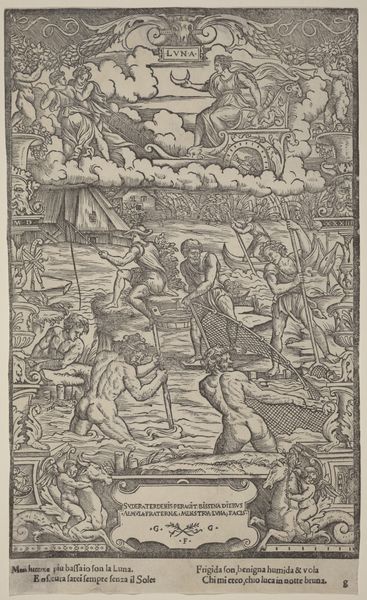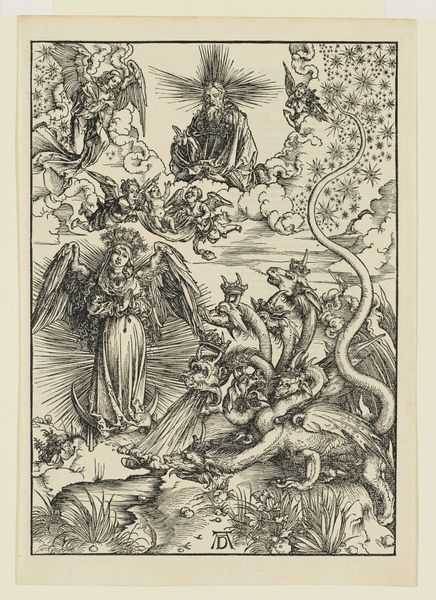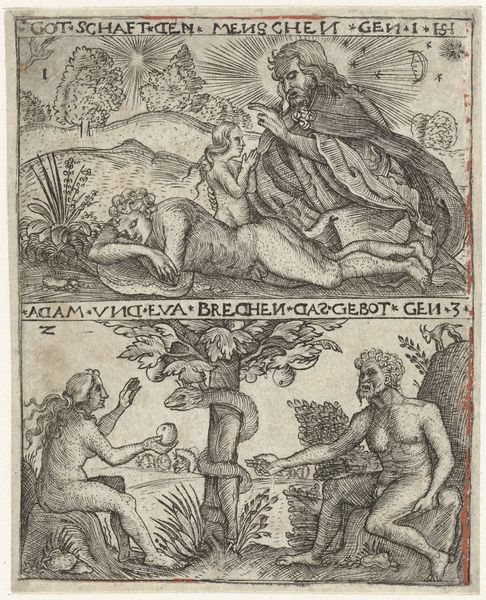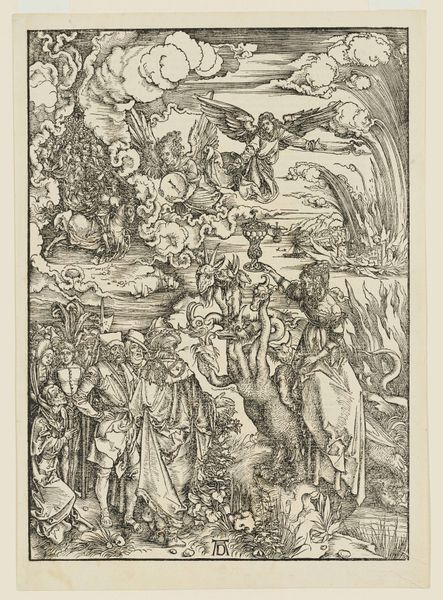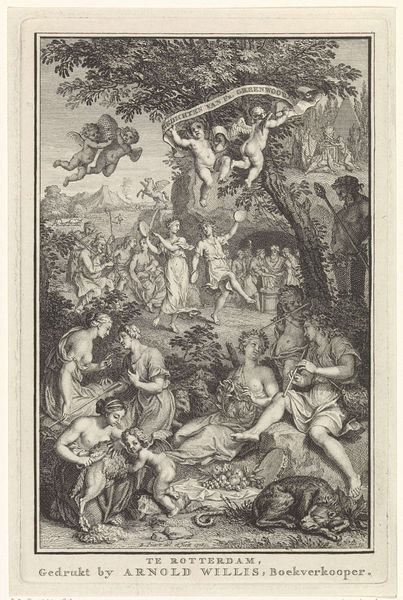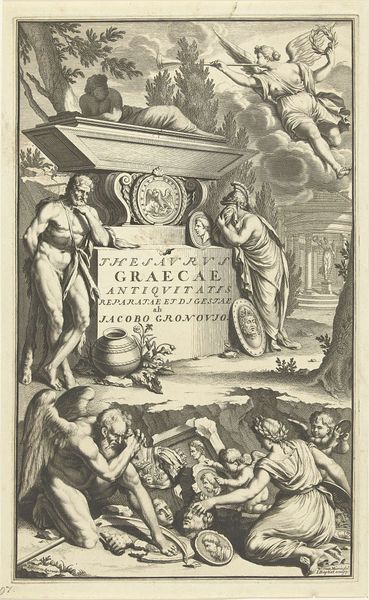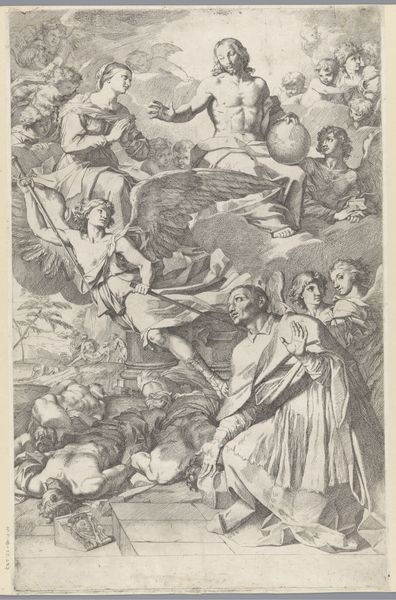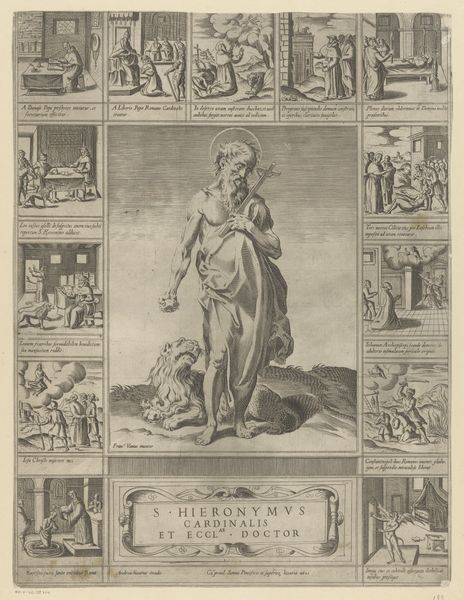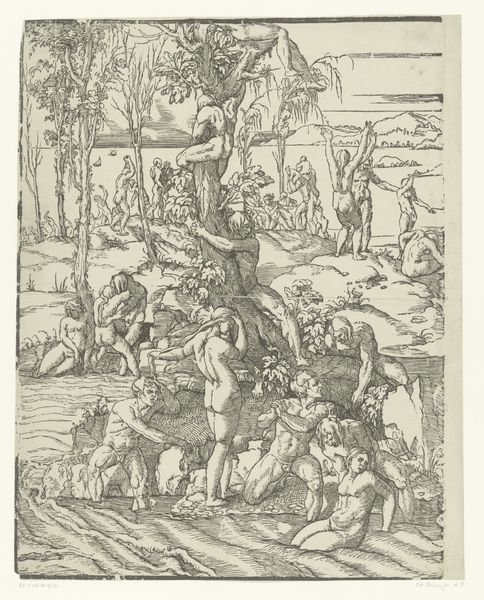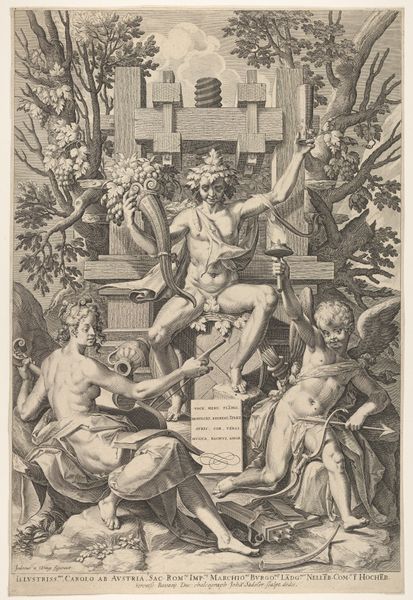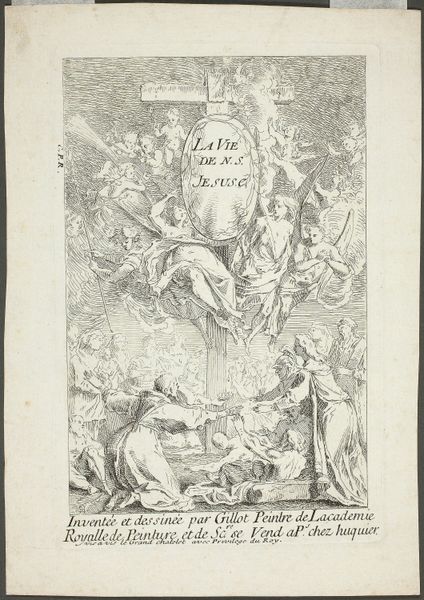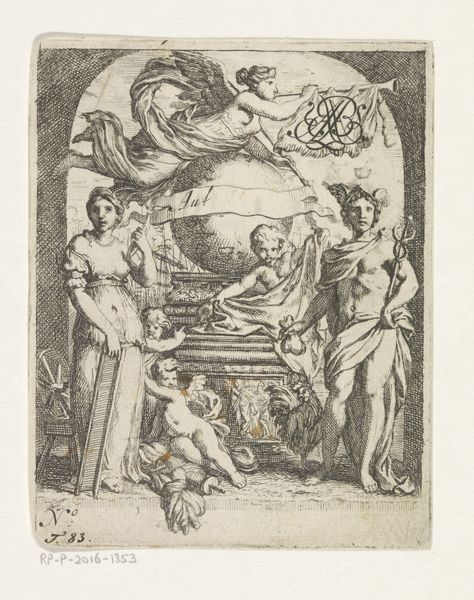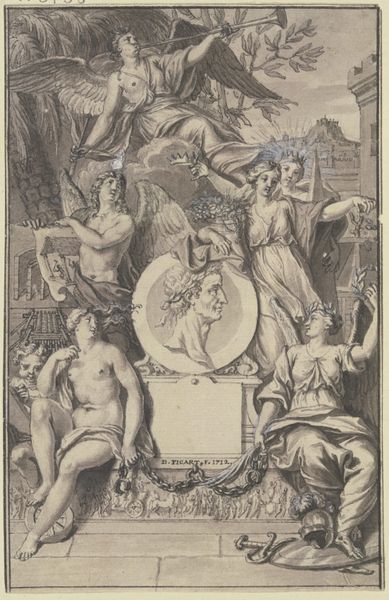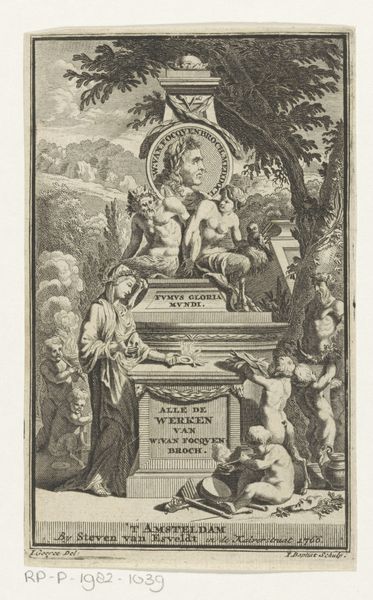
print, engraving
#
allegory
#
baroque
# print
#
figuration
#
history-painting
#
engraving
Dimensions: height 143 mm, width 89 mm
Copyright: Rijks Museum: Open Domain
Curator: The Baroque period etching before us is entitled "Allegorie op de plantkunde," or "Allegory on Botany," created in 1692. Editor: My first thought is that it's teeming with activity. The composition is layered, filled with figures, flora, and swirling clouds; and rendered in meticulous detail. It feels both ornate and industrious. Curator: Absolutely. Its visual complexity points to the themes that shaped 17th-century intellectual life. Note the central figure. We see her standing in the foreground, surrounded by symbolic imagery. This central figure represents botany itself, adorned with flowers and plants, and holding tools alluding to scientific exploration and a deep societal turn toward categorization. We need to situate botanical drawings, as instruments of visual rhetoric, and knowledge production, within their historical context and impact. Editor: The means of production are quite visible, too. Consider the textures achieved through engraving, the labor of the artisan meticulously translating ideas onto a plate. We see how art served as a tool, both descriptive and aspirational. What were the labor practices embedded within the development and study of botany? Were botanists often from privileged, white populations while botanical knowledge was extracted through more oppressed peoples' exploitation? Curator: That is spot on. Indeed, botany intersected with colonial agendas. The field of Botany served to exploit and subjugate populations across the world and control and categorize knowledge production under specific demographics of the European sphere. Editor: Look, at the bottom of the image, we have several people. There's a character sitting on some sort of primitive wheeled object. Do you have insight into how such elements tie into the allegory's construction, especially regarding representations of human labor? Curator: He represents one of the elements: the earthy and, possibly, agricultural element involved in gardening practices, thus tying it to class and gender as represented through early-modern modes. Overall, we have witnessed that even representations are a method for domination of oppressed groups. Editor: Considering its creation as a print, and its function as a frontispiece to a botany manual, the piece certainly highlights how image-making shaped understanding itself and even how labor practices influenced societal relationships. Curator: Precisely, a complex layering of meanings bound to social-cultural phenomena that we would do well to scrutinize in their context.
Comments
No comments
Be the first to comment and join the conversation on the ultimate creative platform.
